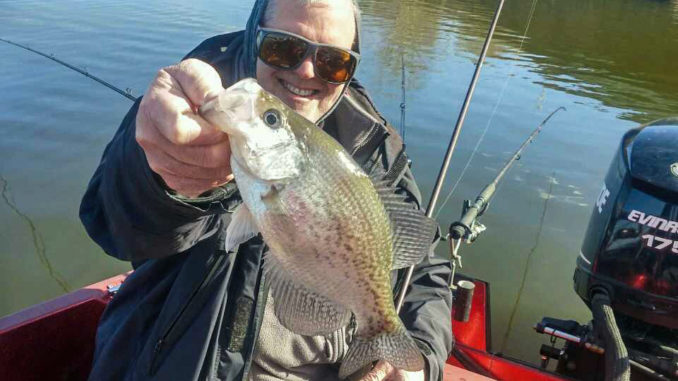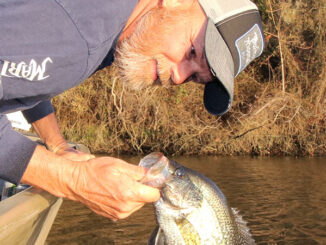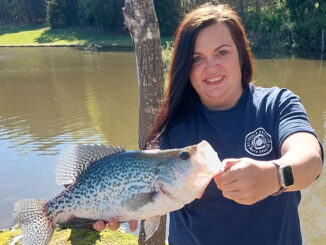
February may be a transition month, but that doesn’t mean it can’t be a big month for crappie at Jordan Lake near Raleigh, N.C.
According to guide Freddie Sinclair of Clayton, N.C, the key is being prepared to follow slabs wherever they go and drop a spread of tight-lined jigs and minnows to pick them off.
“Typically, in February, crappie are still going to be deep,” said Sinclair (919-219-2804). “But, in the middle of February, they’re moving from the mouths of the creeks and coves to the midsections, depending on the weather.”
The fact that the spawning season can start as early as the first week and as late as the third week of March means anglers have to be vigilant to weather forecasts, because upticks in temperatures that remain stable for several days can make all the difference in the world for transient, prespawn crappie.
“One day you can be fishing 18 to 20 feet of water, and three days later you can be fishing in 7 feet of water,” said Sinclair. “Once the water starts warming to 47 or 48 degrees, they can actually start moving to the back of the coves and creeks.”
With certainty, crappie will have moved out of the main-lake channel where they’ve wintered and headed to the mouth of Stinking and Bush creeks to stage by early February. But any creek or cove with a large spawning flat in the back is fair game. From there, it’s a matter of watching his sonar for fish near points, creek-channel ledges, brush and rock while working inward. Once fish are marked, Sinclair puts out his tight-line spread.
“I’m fishing eight to 12 rods off the front of the boat,” said Sinclair, “with, most likely, a ½-ounce egg sinker 14 to 18 inches above a 1/32-ounce jig or a plain No. 4 hook tipped with a minnow. If I can get away with it, I’ll use just a plain, 1/8-ounce jighead without the egg sinker and tipped with a minnow in shallow water.”
Sinclair favors 6-pound monofilament in Jordan’s typically stained water clarity on his 12- to 16-foot rods. His go-to colors for a 2-inch curlytail jig are chartreuse, black, red and orange, but pink can be a winner in dirty water. Sinclair mixes the colors into his spread and tips them with minnows.
Speed and bait placement are crucial. Jigs should be trolled at or no more than a foot or two above where crappie are marked. The dirtier the water, the closer the baits will need to be. Speed should be kept between 0.2 and 0.7 miles per hour.





Be the first to comment